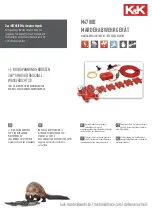
4
2. Front Panel Information and Control Terminals
2-1. Front Panel Information
2-2. Control Terminal Numbers and Marking
Code
Terminal No.
Terminal code
Voltage/current input
Contact input
1
3
5
7
9
11
13
15
17
C1 (+)
C2 (-)
R1
R2
R3
--
M
--
--
C1
C2
R1
R2
R3
L2
L3
--
--
2
4
6
8
10
12
14
16
18
CL1
CL2
CL3
--
--
AL1
AL2
HB1
HB2
To
p
te
rm
in
al
s
Bottom
ter
m
inal
s
˚
Names of monitor lamps
• PL
: Power indicator
• O.C.
: Overcurrent protection action indicator
• FUSE
: Rapid fuse fusing indicator (option)
• O.H.
: Thyristor overheating alarm indicator
• THY
: Thyristor short circuit display/open load indicator
• H.B.
: Heater break alarm action indicator (option)
˚
Names of adjusters
• POWER
: Power adjuster
• SOFT START
: Soft start time adjuster
• HEATER SET
: Heater setting device for heater break alarm (option)
• H.B. SET
: Heater break alarm setting device (option)
˚
Terminal marking and description
• C1-C2
: Control input signal
• R1-R2-R3
: External power adjuster
• M
: Manual operation power (voltage/current input) adjuster
• L2-L3
: Low power (contact input) adjuster
• CL1-CL2-CL3
: Current limiting (option)
• AL1-AL2
: Alarm output
• HB1-HB2
: Heater break alarm output (option)
˚
The terminals have different functions depending on control input
signals. Pay attention to the numbers and codes of the terminals when
wiring is carried out.
˚
The terminals with polarity are marked with (+) and (-).
˚
The alarm terminals (AL1, AL2) and (HB1, HB2) may compose a strong
electric circuit in some cases. For the prevention of noise, they should
be wired separately from other signal lines.





































